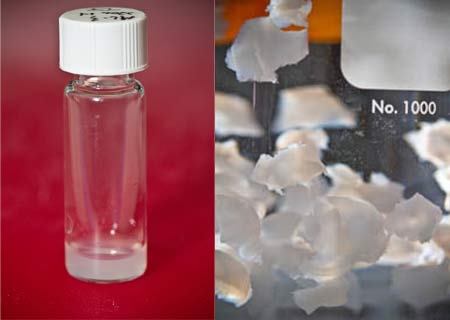We recently came to terms with a stem cell technique for treating heart attack scars. In another trial by professionals at the University of California (UCSD), a new injectable hydrogel that may be used for treating damaged heart tissues has come forward.
This hydrogel is created from cardiac connective tissue that is separated from heart muscle cells by means of a cleansing process. The tissue is then freeze-dried and grinded into powder form, followed by liquefying it to be injected into the heart with ease.
As soon as the connective tissue adapts to body temperature, the liquid gets transformed into a semi-solid and porous gel that stimulates formation of cells in areas where heart tissues are impaired. It also tends to preserve heart function in the process. Apparently, the hydrogel restores damaged heart tissues and delivers biochemical signals to inhibit further deterioration of ambient tissues.
“Most of the materials that people have looked at have been tested in rats or mice, and they are injectable via a needle and syringe. However, almost all of them are not compatible with catheter delivery and would gel too quickly, clogging the catheter during the procedure,†remarked researcher Karen Christman.
This complete mechanism was trialed in a set of rats, where the team found that the gel was seemingly accepted by the bodies of the rodents. The gel also did not appear to cause conditions like arrhythmic heart beating in mice, which implies that the injectable gel may be safe and effective for humans too.
The research is published in the Journal of the American College of Cardiology.

